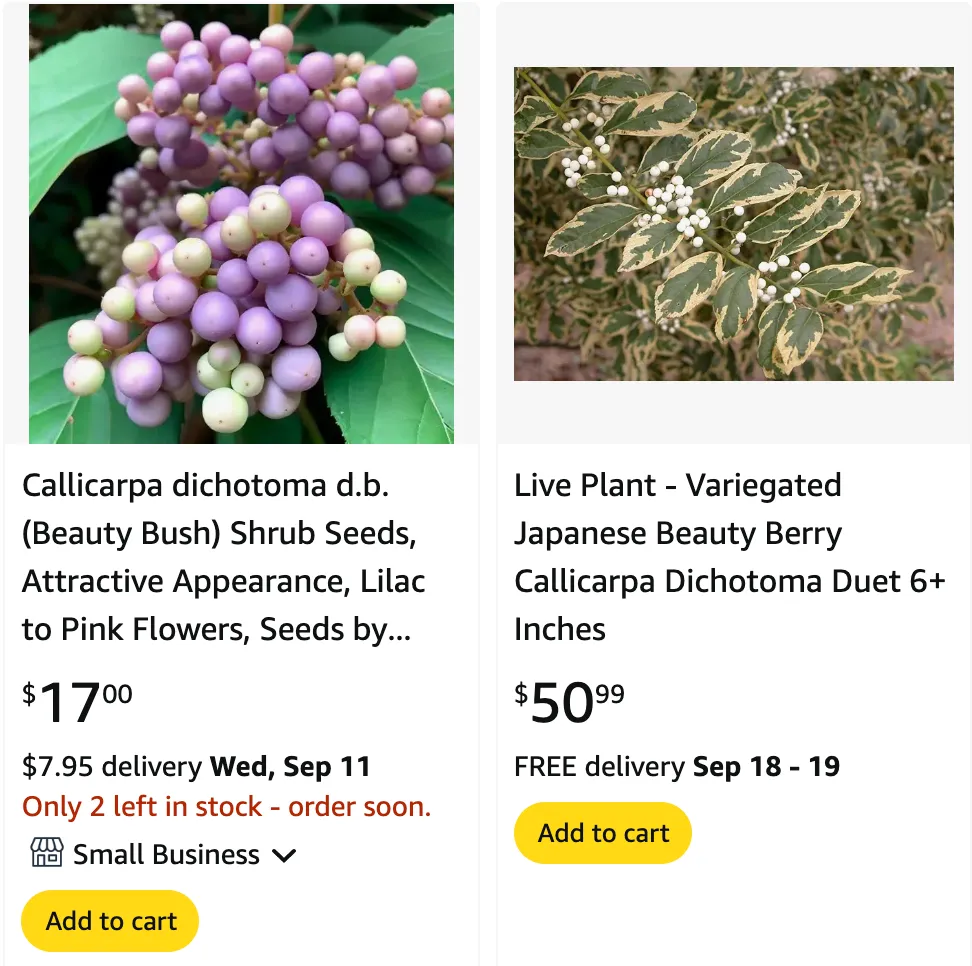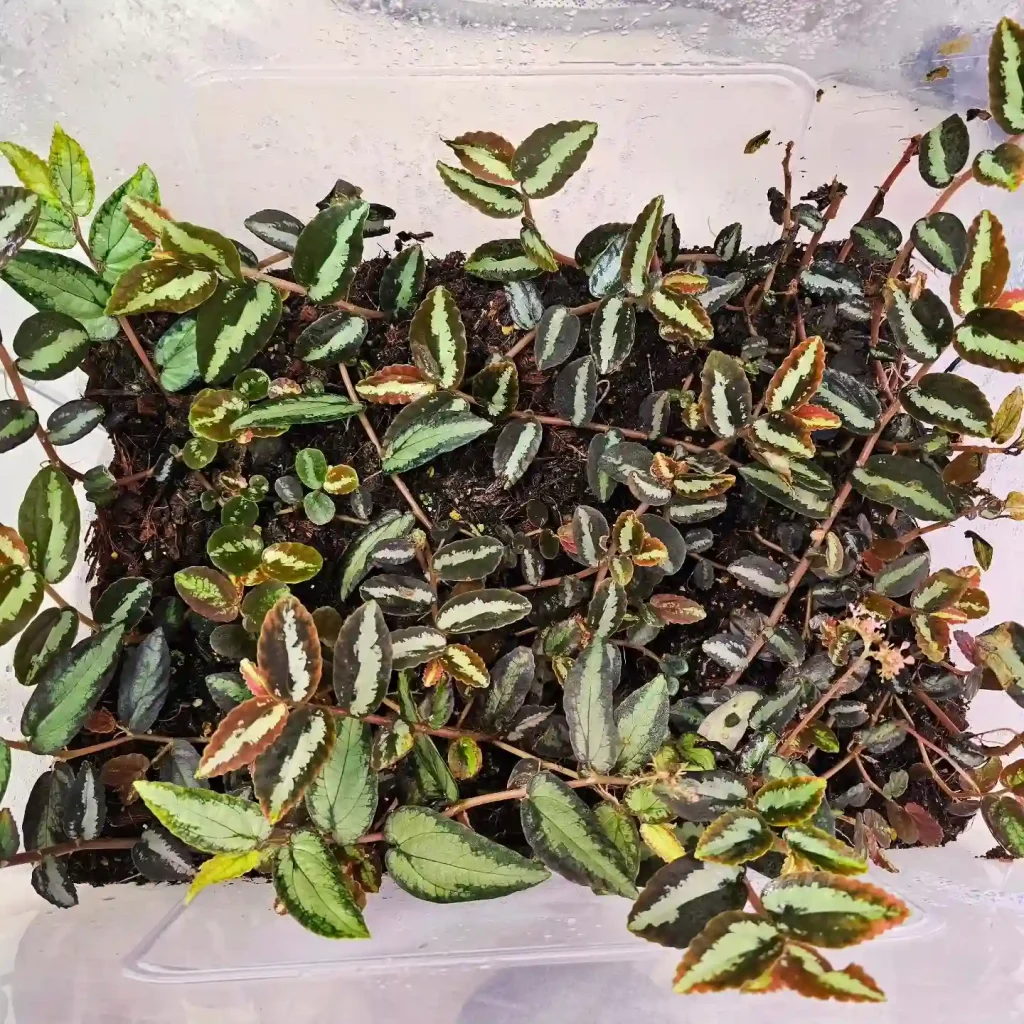
FAQs About Callicarpa Dichotoma
If you’re like me, you might find yourself fascinated by the beauty and complexity of plants. One plant that has caught my eye is Callicarpa Dichotoma, commonly known as the beautyberry. This plant is celebrated for its vibrant purple berries and attractive foliage, but there are some common questions about it that I’d like to address based on my experiences and research.
164 Species in Genus Callicarpa
Is Callicarpa Dichotoma Early Amethyst Native to North America?
Callicarpa Dichotoma, often referred to as the beautyberry, is indeed native to parts of North America. The cultivar known as ‘Early Amethyst’ is particularly valued for its earlier berry production and striking color. Native to regions ranging from the southeastern United States to parts of Texas, Callicarpa Dichotoma thrives in these areas and is well-suited to various climates found across North America. The plant’s adaptability makes it a popular choice for gardeners looking to add a splash of color to their landscapes.
Is Callicarpa Dichotoma Invasive?
One concern that gardeners often have is whether Callicarpa Dichotoma poses an invasive threat. While Callicarpa Dichotoma is not typically classified as invasive in most parts of its native range, it is important to be cautious. In some areas outside its native habitat, it can spread more aggressively than expected. It’s always a good idea to check with local extension services or horticultural experts to determine if this plant might become problematic in your specific region. Ensuring proper maintenance and control measures can help prevent any potential invasive issues.
Callicarpa Dichotoma vs Callicarpa Americana
Comparing Callicarpa Dichotoma with Callicarpa Americana can be quite enlightening. Both species belong to the same genus but have distinct characteristics. Callicarpa Americana, also known as American beautyberry, generally has a more rugged appearance and is native to a broader range, including parts of the southeastern United States. Its berries are often a bit more subdued in color compared to the striking purple of Callicarpa Dichotoma. In contrast, Callicarpa Dichotoma is known for its showy berries and more delicate foliage, which makes it a favorite for ornamental purposes.
What Is Callicarpa Dichotoma?
Callicarpa Dichotoma is a deciduous shrub that is well-known for its clusters of small, vibrant purple berries that appear in late summer and persist into the fall. The plant typically grows to about 3-6 feet in height and width, making it a versatile addition to garden beds or as a hedge. It’s also admired for its attractive, finely toothed leaves that add texture to the landscape.
How to Care for Callicarpa Dichotoma?
Caring for Callicarpa Dichotoma is relatively straightforward. This plant prefers well-drained soil and can tolerate a range of soil types, though it thrives best in slightly acidic to neutral soil. It enjoys full sun to partial shade. Regular watering is important, especially during dry periods, but be cautious not to overwater as this can lead to root issues. Pruning is also beneficial for maintaining its shape and promoting better berry production. Typically, a light pruning in late winter or early spring is sufficient.
How to Propagate Callicarpa Dichotoma?
Propagating Callicarpa Dichotoma can be done through several methods. The most common method is through softwood cuttings taken in late spring or early summer. Dip the cut ends in rooting hormone and plant them in a well-draining potting mix. Keep the cuttings in a warm, humid environment until they develop roots. Alternatively, you can propagate this plant by seeds, though it requires more time and patience. Simply sow seeds in a cold frame or seed-starting mix and keep them moist until germination.
What to Plant With Callicarpa Dichotoma?
Callicarpa Dichotoma pairs well with a variety of other plants. Consider planting it alongside ornamental grasses, such as feather reed grass or blue fescue, to create a dynamic contrast. It also complements perennials like coneflowers or black-eyed Susans, which can enhance the color palette of your garden. For a more structured look, you might pair it with evergreen shrubs or low-growing ground covers.
Can You Grow Callicarpa Dichotoma Indoors?
While Callicarpa Dichotoma is primarily an outdoor plant, it can be grown indoors with the right conditions. It requires plenty of light, so placing it near a south-facing window is ideal. Indoor plants should be kept in a well-draining potting mix and watered carefully to avoid overwatering. However, it’s worth noting that this plant will not produce its characteristic berries indoors due to insufficient light and space.
Is Callicarpa Dichotoma Toxic?
Callicarpa Dichotoma is not known to be toxic to humans or pets. However, it’s always wise to exercise caution and ensure that children and pets do not consume plant material, as ingesting large quantities of any plant can potentially cause digestive issues.
Benefits of Callicarpa Dichotoma
The main benefit of Callicarpa Dichotoma is its aesthetic appeal. The bright purple berries provide a stunning visual contrast against the green foliage and can attract birds to your garden. Additionally, its relatively low maintenance requirements make it a good choice for gardeners who want a striking plant without a lot of fuss.
Common Problems with Callicarpa Dichotoma
One common issue with Callicarpa Dichotoma is susceptibility to pests like scale insects and spider mites. Regular monitoring and prompt treatment with insecticidal soap or neem oil can help manage these pests. Additionally, ensure proper spacing to promote good air circulation and reduce the risk of fungal diseases.
In conclusion, Callicarpa Dichotoma is a beautiful and versatile plant that can enhance any garden with its vibrant berries and attractive foliage. By understanding its care requirements and characteristics, you can make the most of this delightful shrub in your landscape.
If i die, water my plants!



